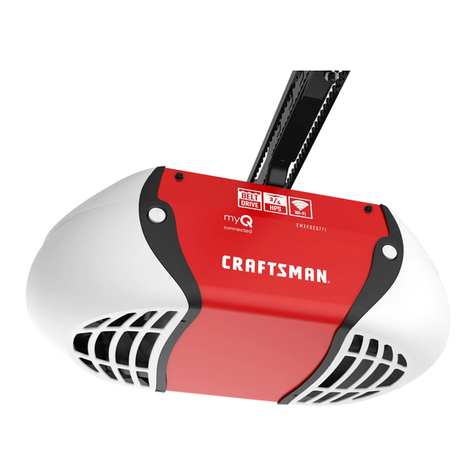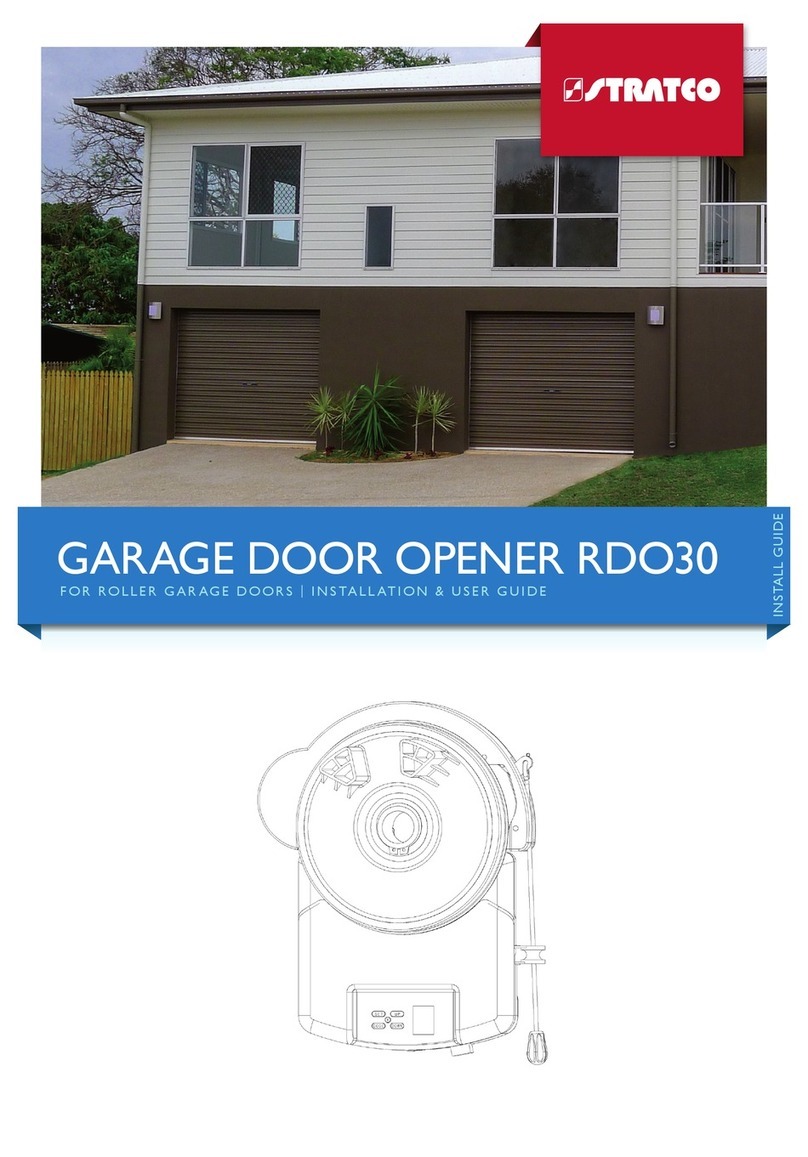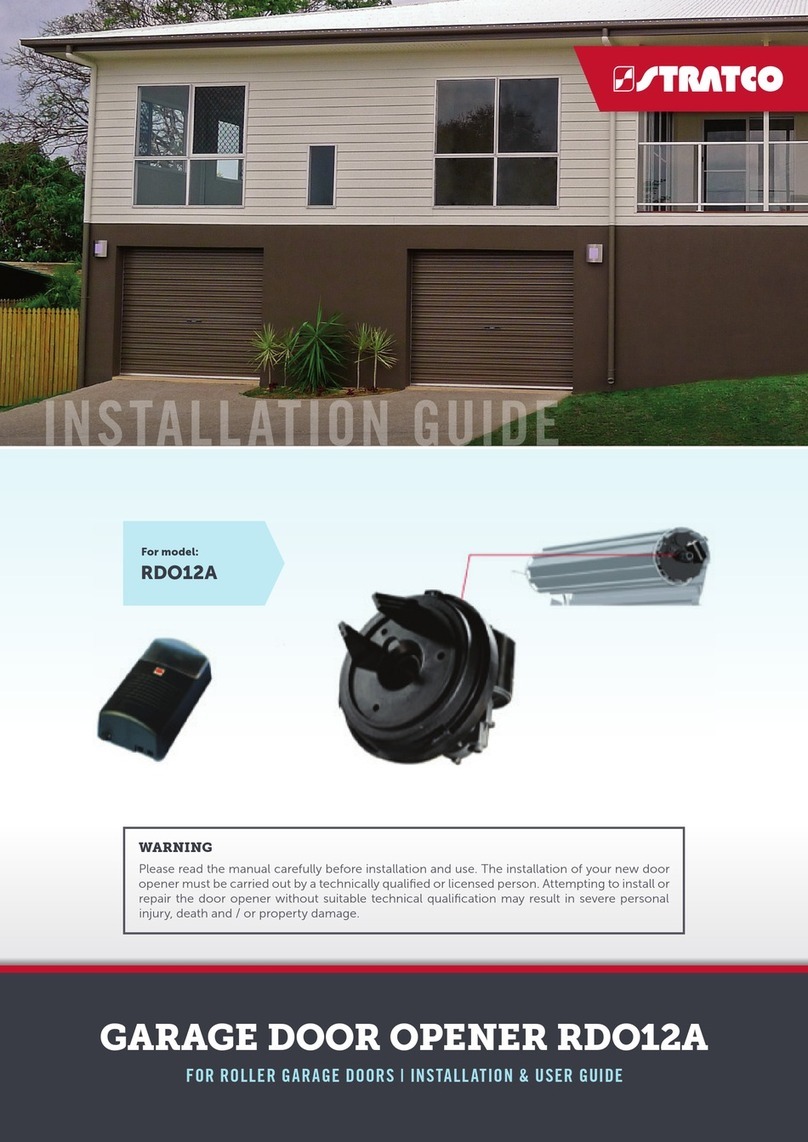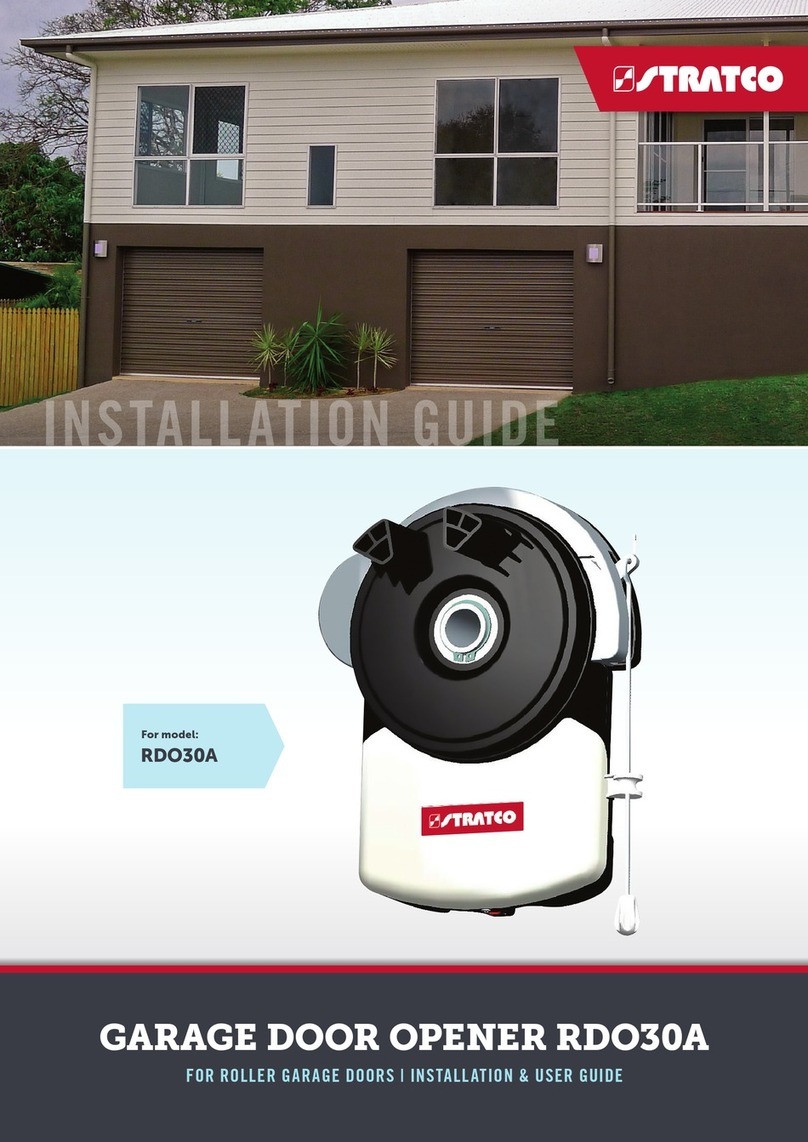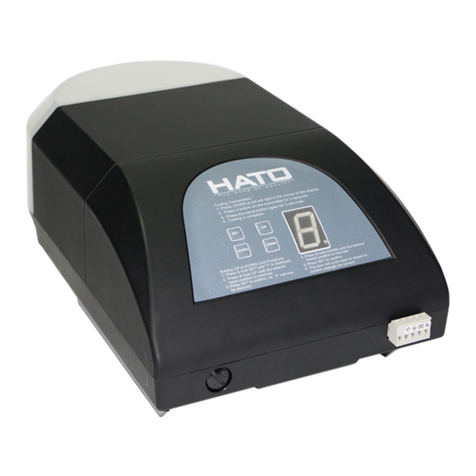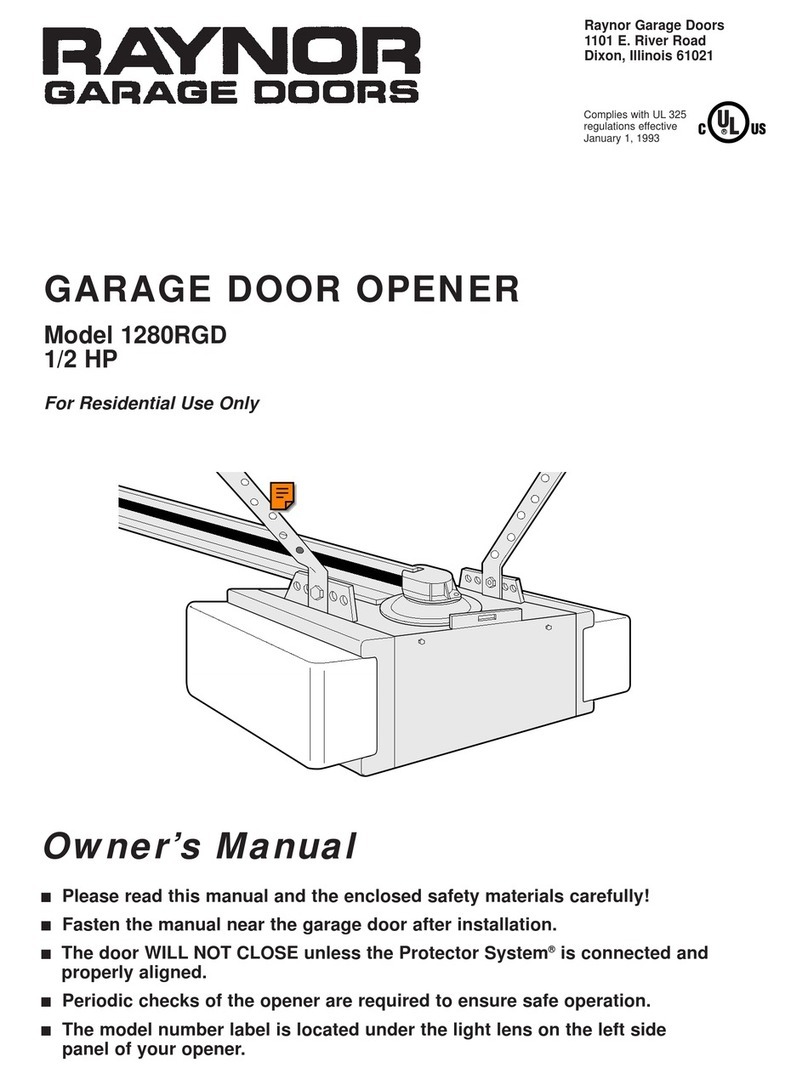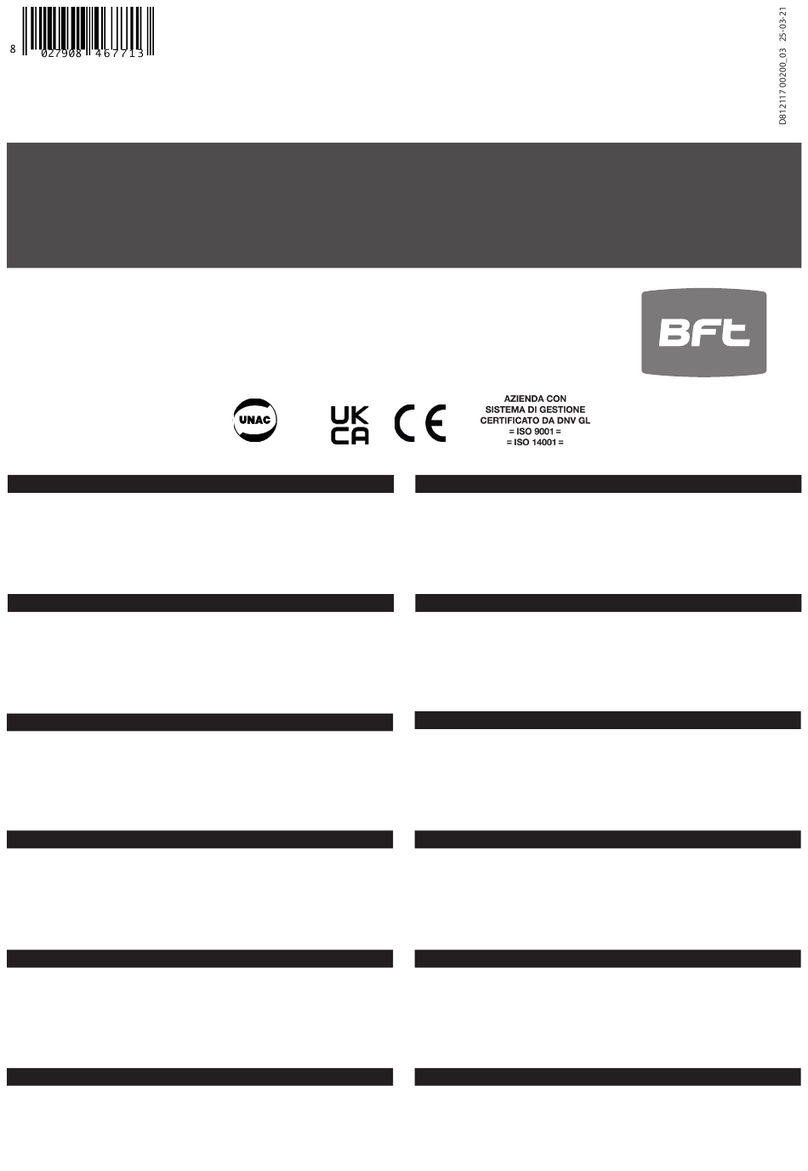FAILURE TO COMPLY WITH THE FOLLOWING SAFETY RECOMMENDATIONS MAY
RESULT IN SERIOUS PERSONAL INJURY, DEATH AND / OR PROPERTY DAMAGE.
1. PLEASE READ CAREFULLY AND ADHERE TO ALL SAFETY AND INSTALLATION
RECOMMENDATIONS.
2. The opener is designed and manufactured to meet local regulations. The installer must be
familiar with local regulations required in respect of the installation of the opener.
3. Unqualified personnel or those persons who do not know the occupational health and
safety standards being applicable to automatic gates and other doors, must in no
circumstances carry out installations or implement systems.
4. Persons who install or service the equipment without observing all the applicable safety
standards will be responsible for any damage, injury, cost, expense or claim whatsoever
any person suffered as a result of failure to install the system correctly and in accordance
with the relevant safety standards and installation manual whether directly or indirectly.
5. For additional safety we strongly recommend the inclusion of Photo Beam. Although the
opener incorporates a pressure sensitive Safety Obstruction Force system the addition of
Photo Beam will greatly enhance the operating safety of an automatic garage door and
provide additional peace of mind.
6. Make sure that the garage door is fully open & stationary before driving in or out of the
garage.
7. Make sure the garage door is fully closed & stationary before leaving.
8. Keep hands and loose clothing off the opener and garage door all the time.
9. The Safety Obstruction System is designed to work on STATIONARY objects only.
Serious personal injury, death and / or property damage may occur if the garage door
comes into contact with a moving object
10. This appliance is not intended for use by persons (including children) with reduced
physical, sensory or mental capabilities, or lack of experience and knowledge,
unless they have been given supervision or instruction concerning use of the
appliance by a person responsible for their safety. Children should be supervised
to ensure that they do not play with the appliance.
11. Waste electrical products should not be disposed of with household waste.
Please recycle where facilities exist. Check with your local authority or retailer for
recycling advice.
12. If the supply cord is damaged, it must be replaced by the manufacturer, its service
agent or similarly qualified persons in order to avoid a hazard.
-WARNING: Important safety instructions. It is important for the safety of persons to
follow all instructions. Save these instructions.
-Do not allow children to play with door controls. Keep remote controls away from
children.
-Watch the moving door and keep people away until the door is completely opened
or closed.
